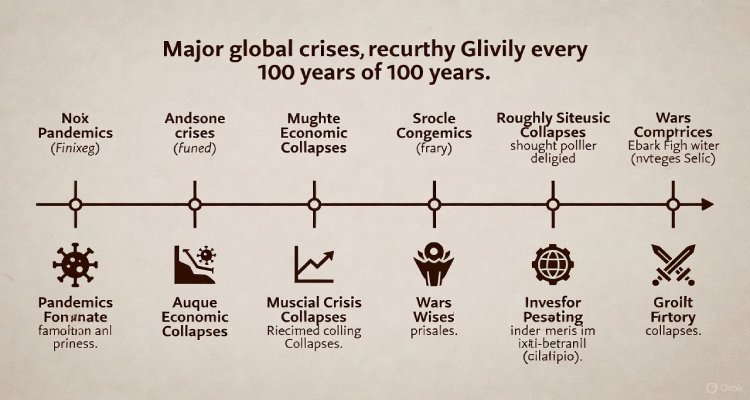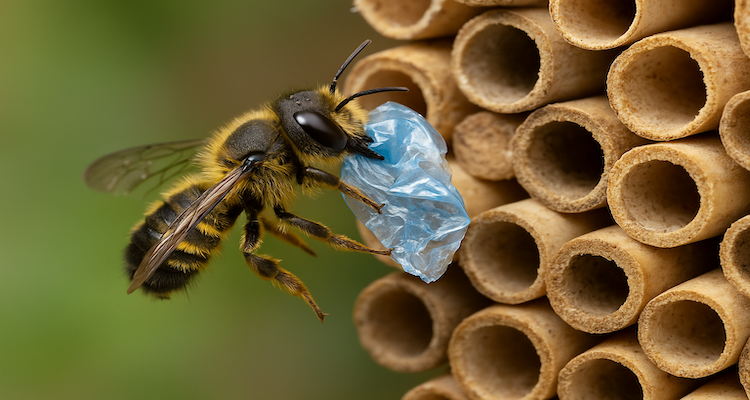Bees Are Using Trash to Outsmart Extinction—and It’s Brilliant
In a surprising twist of survival, bees are using human garbage to build nests and protect colonies. Discover how this behavior is helping them adapt to extinction threats.
Introduction: The Trash-Savvy Bee Revolution
In the age of climate disruption and collapsing ecosystems, one species is fighting back with ingenuity—and a bit of litter. Across urban and semi-urban areas, scientists are observing bees doing the unthinkable: collecting plastic, cigarette butts, and bottle caps to build and fortify their nests. Far from a sign of decline, this unexpected behavior could mark an evolutionary leap in the bee’s fight for survival.
What might appear as desperation is, in fact, a clever act of adaptation. Bees are turning our waste into a weapon against extinction. And in doing so, they may be offering us a blueprint for resilience in a polluted world.
Context: Bees on the Brink
Bees have long been environmental bellwethers. Essential to pollination, they are responsible for more than one-third of the food we eat. Yet, over the past few decades, these industrious insects have been dying off at alarming rates due to habitat loss, pesticide exposure, climate change, and disease—most notably from the Varroa mite and colony collapse disorder.
In some regions, bee populations have declined by more than 40%, according to the U.S. Department of Agriculture. This has prompted global campaigns to “Save the Bees,” including restrictions on neonicotinoid pesticides and efforts to restore natural habitats. However, in environments where traditional materials like leaves and plant resin are no longer readily available, bees are improvising in astonishing ways.
Main Development: Building with Garbage
Recent studies from entomologists in Argentina, Canada, and other countries reveal a striking new behavior: bees incorporating synthetic materials into their nests. In one 2020 study led by Dr. Mariana Allasino from the National Agricultural Technology Institute in Argentina, researchers documented leafcutter bees building nests using polyurethane foam, plastic bags, and string. In Canada, bee researcher Scott MacIvor of the University of Toronto found nests built with bits of plastic and cigarette butts.
These aren’t isolated incidents—they’re evidence of a global trend.
Some bees, it turns out, are intentionally using human refuse not just as filler, but as insulation, structural support, and even pest repellents. For example, nicotine residues in cigarette butts have been found to repel mites and parasites. In effect, bees are using our trash to outsmart both predators and environmental stressors.
This remarkable shift in behavior demonstrates an advanced level of environmental problem-solving, akin to tool use observed in crows and primates.
Expert Insight: “A Testament to Adaptability”
“This is a clear sign of behavioral plasticity,” says Dr. Sheila Colla, a bee conservation scientist at York University in Toronto. “These bees are adapting to the urban environment in real-time. It’s a testament to how dynamic and resourceful nature can be, even in the face of adversity.”
However, she cautions that this shouldn’t be seen as a license to continue polluting. “While it’s fascinating that bees are using trash, it reflects how degraded their natural habitats have become. Plastic is not a long-term solution—it’s a stopgap.”
Ecologists also warn about the unknowns: Will plastic nests lead to long-term health issues for bees? Could synthetic materials interfere with nest temperature regulation or lead to microplastic contamination?
Nonetheless, the behavior underscores how species are innovating to survive—a reminder of nature’s incredible, if desperate, flexibility.
Implications: Nature’s Warning—and Promise
This trash-based innovation is a double-edged sword. On one hand, it shows resilience and adaptive evolution; on the other, it reveals the stark consequences of our environmental neglect.
For Bees:
-
Short-term Benefits: Protection from parasites and predators.
Potential Risks: Toxicity from synthetic chemicals, structural instability, and reduced reproductive success.
For Us:
-
Call to Action: A wake-up call to reduce plastic pollution and preserve natural habitats.
Research Opportunity: Understanding how bees adapt may lead to innovations in materials science, pest control, and urban ecology.
Urban planners and conservationists are now exploring how cityscapes can be made more pollinator-friendly—even integrating bee hotels that account for their new building materials.
Conclusion: The Last Buzz of Adaptation?
The image of a bee dragging a cigarette butt back to its nest is surreal—but deeply symbolic. It captures both the urgency of the climate crisis and the tenacity of life in its face. While bees may be turning trash into treasure, their resourcefulness shouldn’t absolve us of responsibility.
As we marvel at their ingenuity, the question remains: Will we adapt as quickly and creatively as they have?
If bees can rewrite their survival playbook using our refuse, then perhaps there’s still hope—for them and for us.
⚠️ (Disclaimer: This article is based on peer-reviewed studies and expert commentary. It does not promote the use of trash as a conservation strategy but highlights emergent behavior in pollinators due to human environmental impact. All facts have been sourced and interpreted in line with journalistic and scientific standards.)











